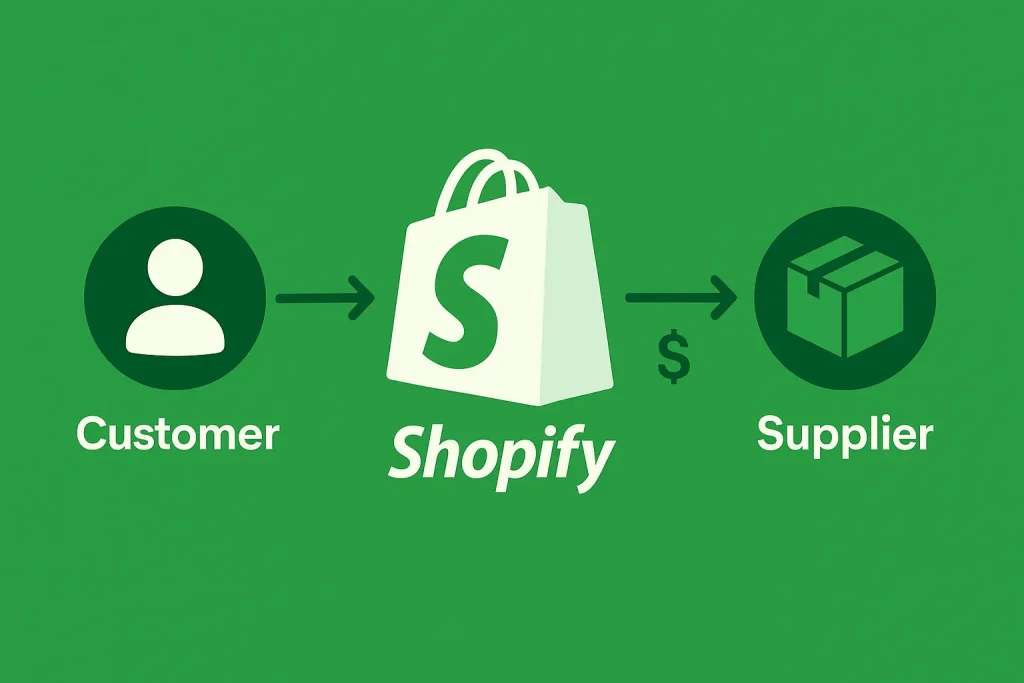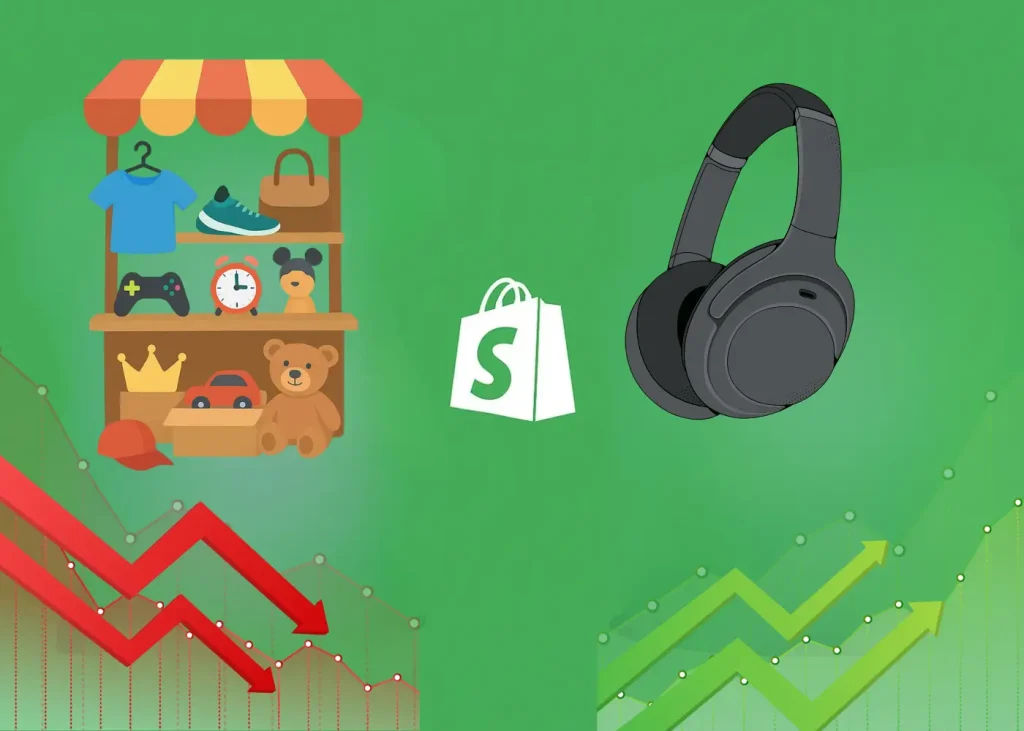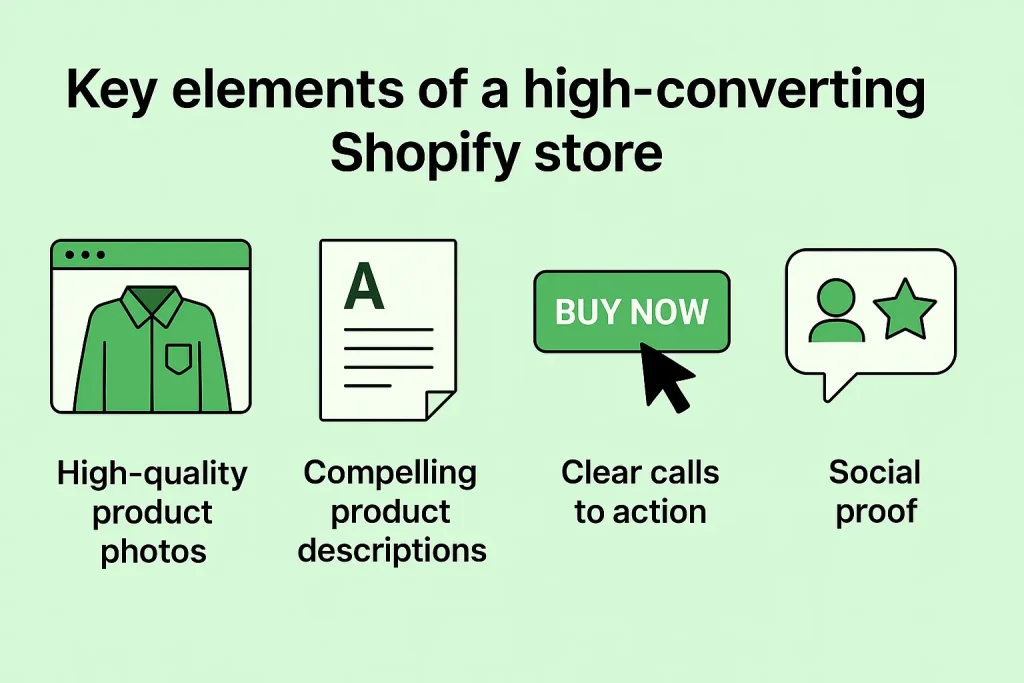
How to Start Shopify Dropshipping in 2025: A No-Nonsense Guide
Before we even get into the “How to start Shopify Dropshipping?”, let’s get one thing straight: dropshipping isn’t a get-rich-quick scheme.
If you’re looking for a magic button, you’ll be disappointed.
We’re talking business, and like any real business, it requires work. If you’re willing to put in the effort, the rewards can be significant.
Knowing all the buzz around dropshipping and the Lamborghini gurus promising seven-figure profits, please forget that. The reality is simple, requires work, and is sustainable.
What is Dropshipping?
In simple words, you set up an online store. A customer places an order. You forward that order to a third-party supplier. They ship the product directly to your customer.
You never touch the inventory. No warehousing costs, no packing boxes.
You’re the middleman, and you make a profit on the difference between what the customer pays you and what you pay the supplier.
Easier said than done. And if you don’t do it right, it can also be a total nightmare.

The Problem with Most Dropshipping Advice
People get so excited about the “passive income” that they forget about the most important part: the customer.
They choose a product based on a trend, run some ads, watch a tutorial on how to Start Shopify Dropshipping, and get frustrated when they don’t see the sales.
Why does it happen?
Because they haven’t verified consistent demand, checked competition, or mentioned the pain points of their ideal customer.
So, let’s flip the script. Instead of me telling you how start Shopify Dropshipping, let’s think like a potential dropshipper. You’re probably asking yourself these questions:
– How to Start Shopify Dropshipping
– What products should I sell?
– How do I find a reliable supplier?
– Is dropshipping saturated? Can I still make money?
– How do I market my store and get my first sale?
And those are the right questions. The answers are what separate the successful entrepreneurs from the ones who quit after a month.
Step 1: Niche Down and Find a Winning Product
This is where most people get it wrong. They want to sell everything to everyone.
Bad idea.
You’ll end up with a store that looks like a flea market and an advertising budget that gets burned up in a week.
You need to find a niche and then find a winning product within that niche.
A winning product isn’t just something that’s trending on TikTok. A winning product solves a real problem or fulfills a specific desire.
For example, don’t just sell “kitchen gadgets.” That’s way too broad. Instead, sell “smart kitchen gadgets for college students.” Now you have a specific audience with specific problems.
And now, you can market directly to them, using their lingo, talking about their pain points.
How to find a winning product:
- Solve a problem: Instead of searching how to start Shopify Dropshipping, start looking for products that make life easier. Think about things that are annoying or time-consuming, and find a product that fixes them.
- Look for products with a “wow” factor: A product that makes people stop scrolling and say, “I need that.” However, avoid trends as they’re not consistent.
- Check the competition: A little competition is good. It means there’s a market. Too much competition means it’s going to be tough to stand out. Use tools like Ahrefs or Semrush to check search volume for dropshipping products and your specific niche.
- Don’t ignore the evergreen: Not every product has to be a viral sensation. Evergreen products, like posture correctors or phone accessories, are always in demand. They might not give a massive spike in sales, but they offer you a steady income.

You can also read our blog on how One Product Shopify Stores are Still Crushing in 2025.
Step 2: Find Your Supplier (And Don’t Get Scammed)
This is scary for a lot of people. You’re trusting a stranger in another country to handle your inventory and shipping.
It’s a leap of faith, but with some due diligence, you can mitigate the risk.
The most common platforms for finding dropshipping suppliers are AliExpress, SaleHoo, and CJDropshipping. AliExpress is popular because of its massive product selection, but be prepared to deal with longer shipping times.
Here’s how to find a good supplier for dropshipping and not be scammed:
- Check the ratings and reviews: It’s a non-negotiable. Look for suppliers with high ratings and positive reviews. Thoroughly read the negative ones too. They tell you a lot about how a supplier handles problems.
- Communicate with them: Before you add a product to your store, message the supplier. Ask them about their shipping times, return policy, and how they handle broken or lost items. A responsive supplier is more reliable.
- Order a sample: This is crucial. Order the product yourself to check the quality, packaging, and shipping time. If you’re not happy with the product, your customers won’t be either.
Step 3: Build Your Shopify Store
Shopify is the gold standard for a reason. It’s user-friendly, has a huge app store, and is built for e-commerce.
Plus, you don’t need any coding knowledge to create a professional-looking store. However, you can customize it with custom code as well.
Think of your store as your digital storefront. It needs to look good, be easy to navigate, and look genuine. Please prioritize building trust over flashy promotions.
Key elements of a high-converting Shopify store:
- High-quality product photos: When it comes to e-commerce, you buy what you see. So, use clear, well-lit HD photos. If the supplier’s photos are of low quality, consider ordering a sample and taking your own.
- Compelling product descriptions: Don’t just list the features. Tell a story. Talk about the benefits. How will this product make your customers’ lives better? This is where you connect with your customer.
- Clear calls to action: Use a prominent “Add to Cart” button. Make it easy for people to buy. Make the purchase process easy. Customers hate it when the purchase process is tricky or too lengthy.
- Social proof: Add customer reviews and testimonials. People trust people. And they value other people’s opinions more than they trust a brand.

Step 4: Drive Traffic and Make Your First Sale
This is the big one. Your store could be the most beautiful website on the internet, but if no one sees it, you won’t make a dollar.
For a new domain, you need to focus on traffic sources that will give you quick wins and build momentum.
Think social, create awareness, and use content to your advantage.
Social Media Marketing:
- TikTok and Instagram Reels: Absolute goldmines for Shopify dropshippers in 2025. Create short, engaging videos that showcase your product in a fun or useful way. Engage with your customers using storytelling, and get your product recognized.
- Influencer Marketing: Find micro-influencers in your niche and offer them a free product in exchange for a review. This can be a cost-effective way for authentic reviews and creating awareness in targeted audiences.
Paid Advertising:
- Facebook and Instagram Ads: Start with a small budget and test ad creatives and audiences. Don’t go all in at the beginning. Learn what works, then scale.
- Google Ads: Focus on long-tail keywords. For example, instead of “headphones,” target “noise-canceling headphones for remote work.” These keywords are targeted, have less competition, and are more likely to attract buyers.
Content Marketing (Your Long-term Success Partner):
This is where your new blogs come in. Writing valuable content that solves your customers’ problems builds authority and trust.
Plus, it’s a great way to attract free organic traffic from Google. Blogging for e-commerce is a long-term game, but it pays off well.
An Alternative to Dropshipping: Private Label
Dropshipping is fantastic for testing products and getting started with minimal risk.
But what happens when you find a product that’s consistently selling well? You’re still relying on a third-party supplier, which can be a liability.
Also, you market someone else’s product. And you only earn when they earn. This is where the idea of a private label comes in.
Instead of dropshipping, you’re essentially creating your own brand.
You find a manufacturer, put your logo on the product, and control the entire supply chain. This gives you several advantages:
- Higher profit margins: You can buy in bulk, which lowers your cost per unit.
- Brand building: You’re not just selling a generic product; you’re building a brand that people can connect with. This increases customer loyalty, a huge asset.
- Quality control: You have more control over the quality of the product and the customer experience.
Is Private Label the Right Thing to Do in Dubai?
Private label is definitely a great business model, especially in a brand-conscious city like Dubai. But it isn’t for everyone.
It requires upfront capital for inventory.
If you can invest in inventory and manage deliveries through a logistics company, the rest remains the same as dropshipping, but with greater profits and control.
As a leaner alternative, you can try a micro private label with a smaller budget to test your products and scale up the winning ones.
However, if you’re crunched on capital, dropshipping can be a good start. But note that the niche is quite competitive and requires decent ad spend to get started. If you need help, explrore our guidance on dropshipping training in dubai.
For beginners, here’s our Shopify training to help you build your e-commerce store.
And if you’ve been in the e-commerce game for long but are stuck at some point, request a free callback from our e-commerce experts.
Read Also: What’s the Real Cost of Starting a Shopify Dropshipping Business in 2025
Read Also: Shopify vs Amazon Dropshipping 2025: Best E-commerce Platform for Dropshipping?
